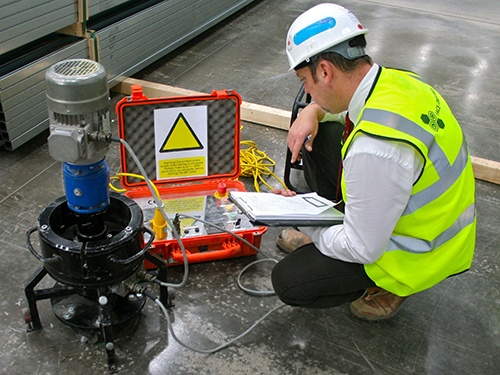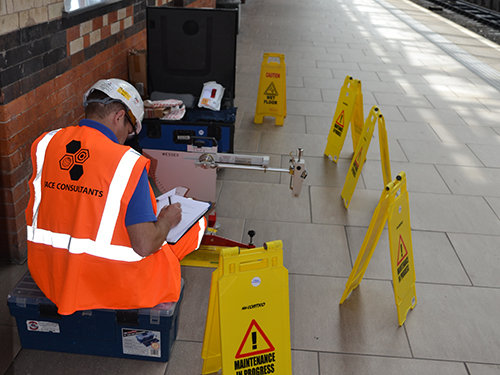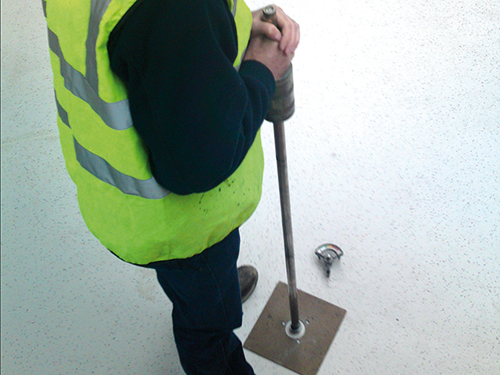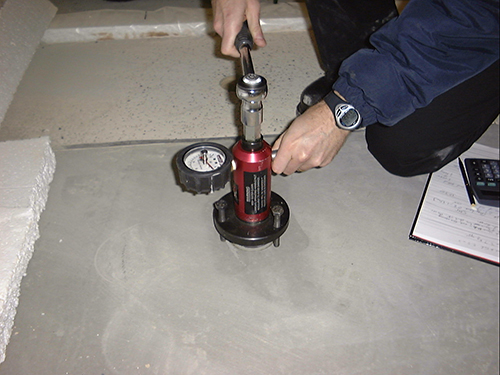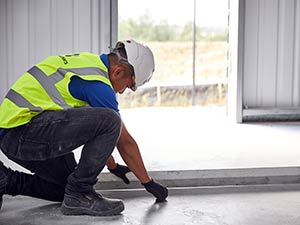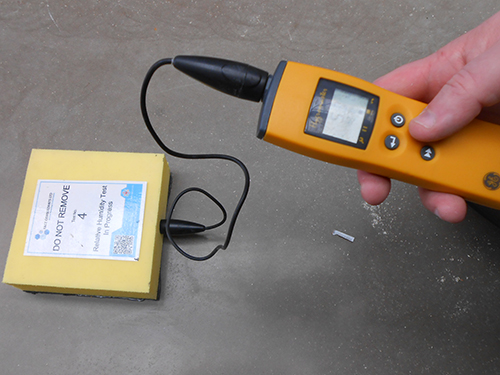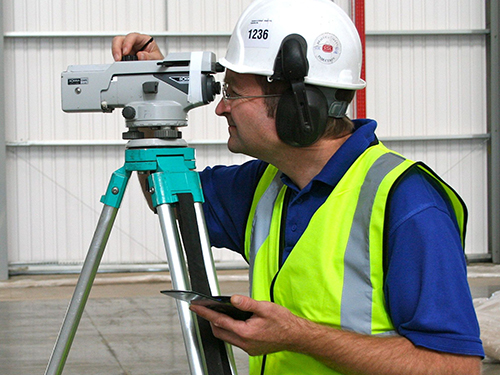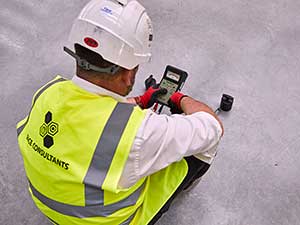Surface Microroughness Testing

Surface Microroughness is a component of surface texture, it is generally determined by looking at deviations from the normal (mean line) profile of the surface.
If these deviations are large the surface is rough, if they are small the surface is smooth.
In general the rougher the surface the higher the friction coefficient.
There are a number of parameters of surface microroughness, but the two parameters we deal with mainly are the Rz and Ra parameters.
The Rz parameter – is the mean value of the maximum peak to valley height of the profile within the sampling lengths.
The Ra parameter – is the arithmetical mean deviation of the assessed profile.
Checking Surface Microroughness

To check surface microroughness (often termed as ‘roughness) we use a device called a Surtronic Duo 9.
This device uses the ‘contact stylus method’ which draws a hard wearing diamond stylus across the surface with a precision motorised traverse mechanism to ensure that the correct horizontal distance is travelled.
Surface Roughness Data collection
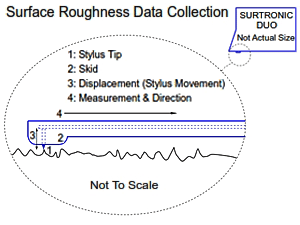
Vertical movement of the stylus is detected by a high quality piezo-electric pick-up as it travels across peaks and valleys which converts mechanical movement into electrical signals. The electrical signal is digitised and sent to a microprocessor for instant calculation of surface parameters using standardised algorithms.
Why do we check the Rz parameter?
Rz Measurements can be used as further information when assessing a floors slip potential for pedestrian foot traffic. This is because surface roughness is inherently linked to the formation of the hydrodynamic lubricating film (also known as a ‘squeeze film) such films are known to generate slips in wet conditions. The roughness of a surface provides the contact between the foot and the floor, through the aforementioned squeeze film.
Research has shown some relationship between roughness readings and pendulum test values.
We can carry out Rz Surface Microroughness measurements as an addition to Pendulum tests. Although roughness measurements are not the same as slip resistance measurements, readings gathered can be used as complementary information regarding unusual properties or conditions of a floor surface.
Table 3 Slip potential classifications for Rz Surface Microroughness
| Slip Potential | Rz Microroughness |
|---|---|
| High | Less than 10 μm |
| Moderate | 10 – 20 μm |
| Low | Greater than 20 μm |
| Above Table 3 from UKSRG Guidelines Issue 5, 2016 | |
In some situations, for example on the edge of a stair nosing or the curved surface of a bath or shower tray, a measurement of roughness may be the only measurement that it is possible to take.
Rz measurements can also be used to enter into the HSE’s Slip Assessment Tool (SAT) if desired.
Table 3 from issue 5 of UKSRG Guidelines gives an indication of slip potential in water wet conditions.
Why do we check the Ra parameter?
Testing of the Ra parameter

We are generally required to carry out testing of the Ra parameter as well as other surface characteristic tests, on some floors which are to be used by G2P Automation, AMR’s, BOTS.
Friction Requirements
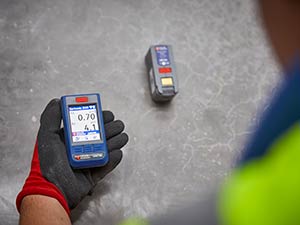
These devices often require that the surface they operate on have a certain roughness to aid with their friction requirements, to assist with starting and stopping for example.
We can carry out surface roughness testing along with the manufacturers’ requirements to see if the floor is fit for purpose.
